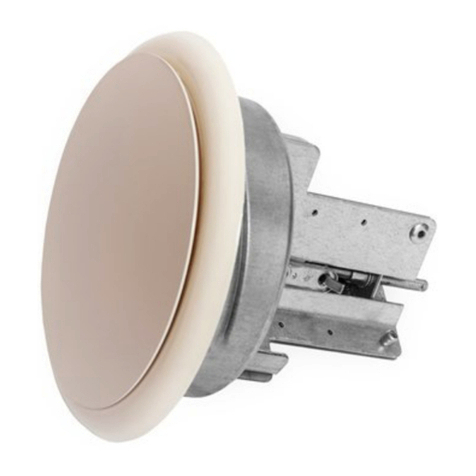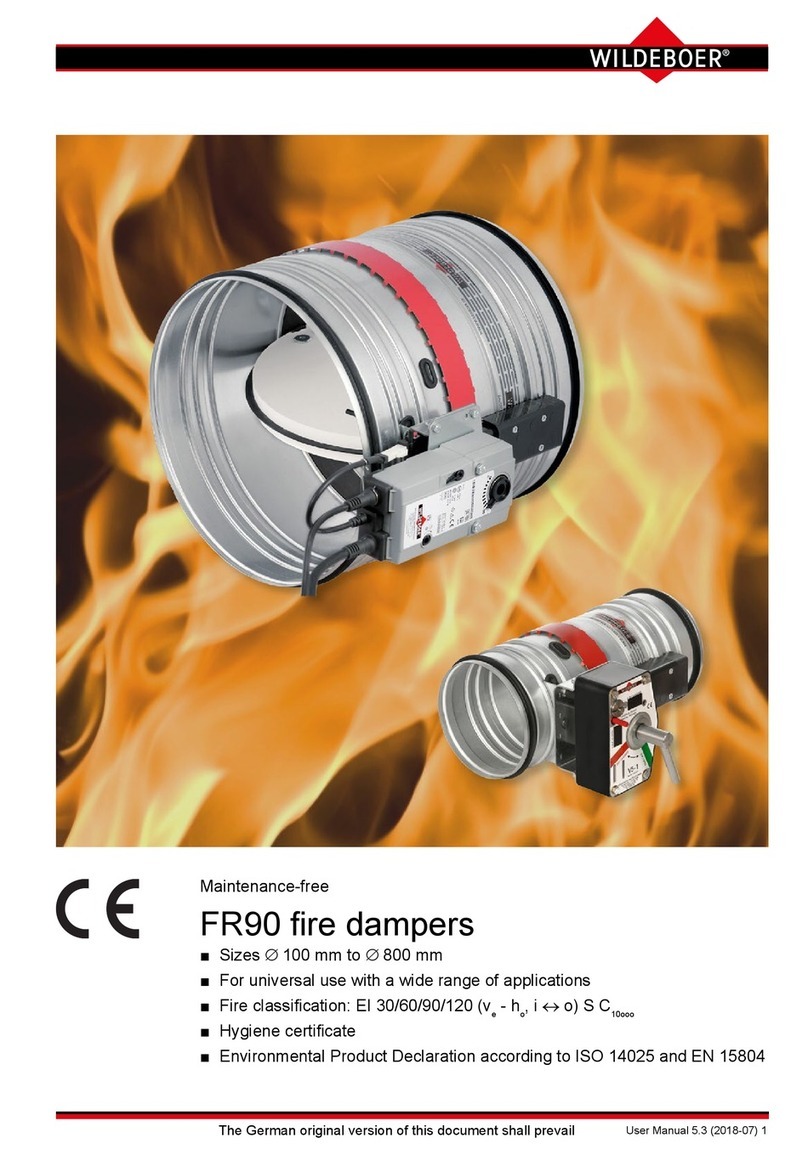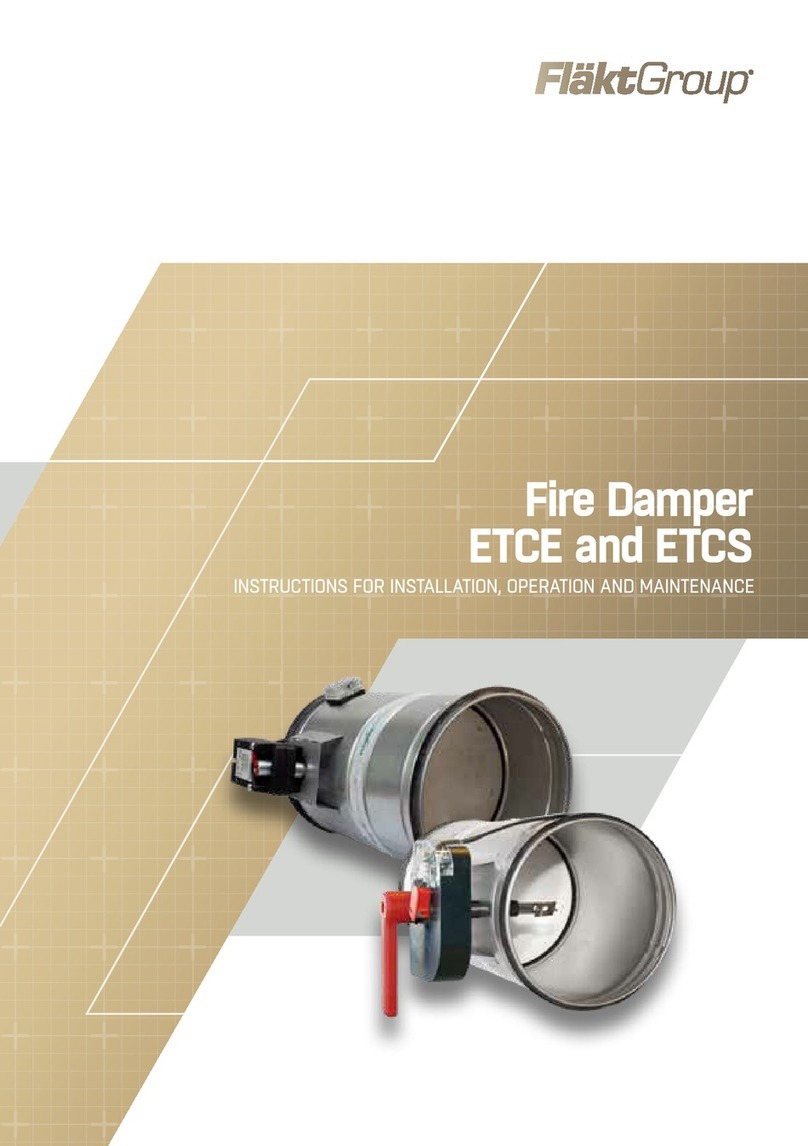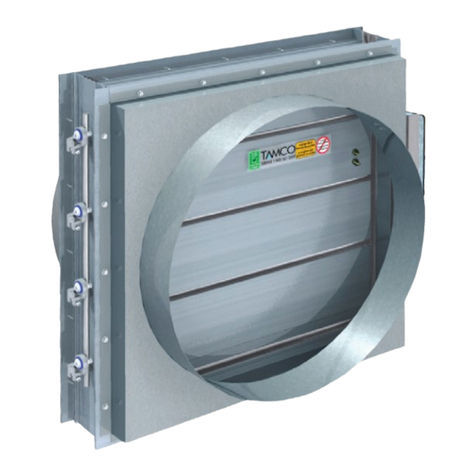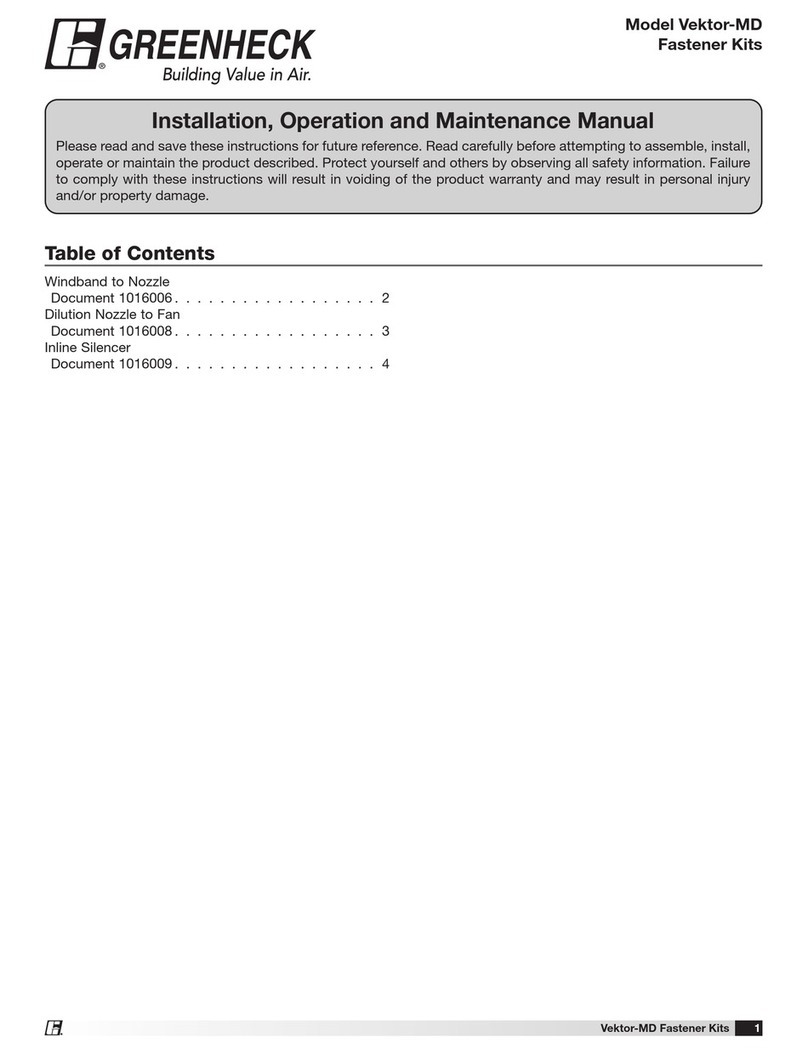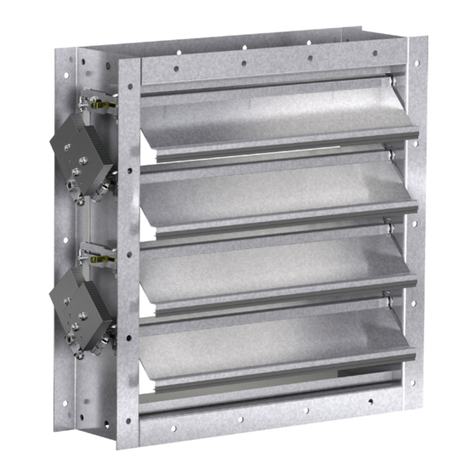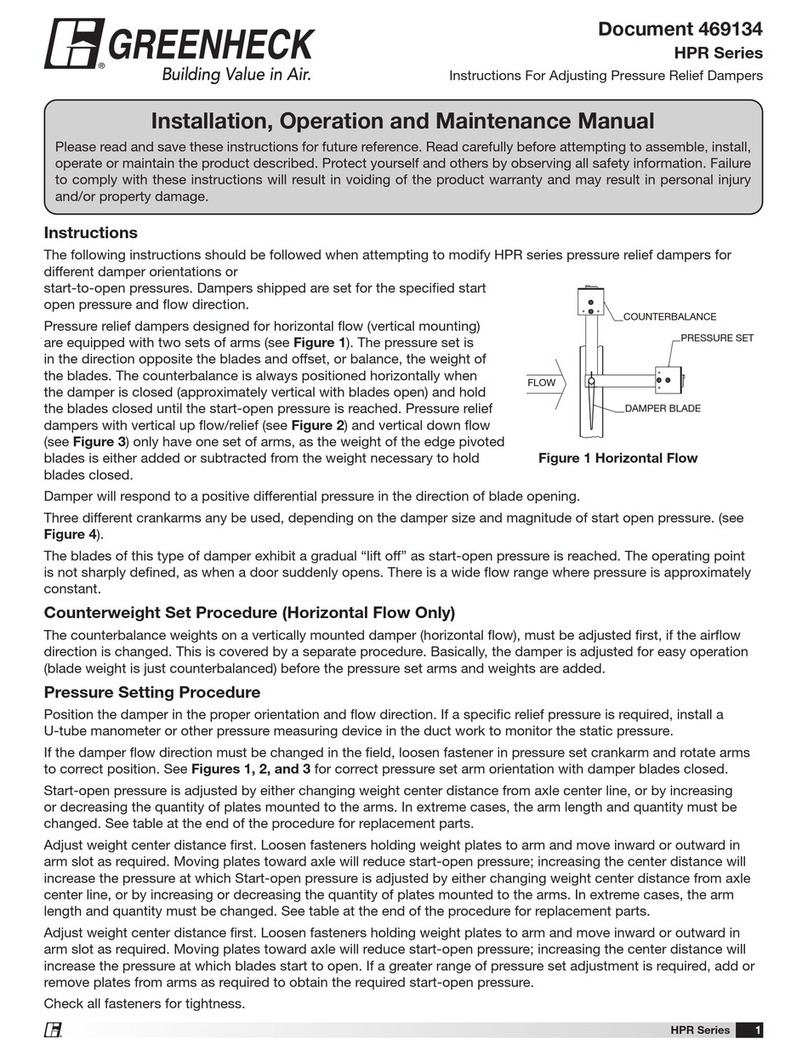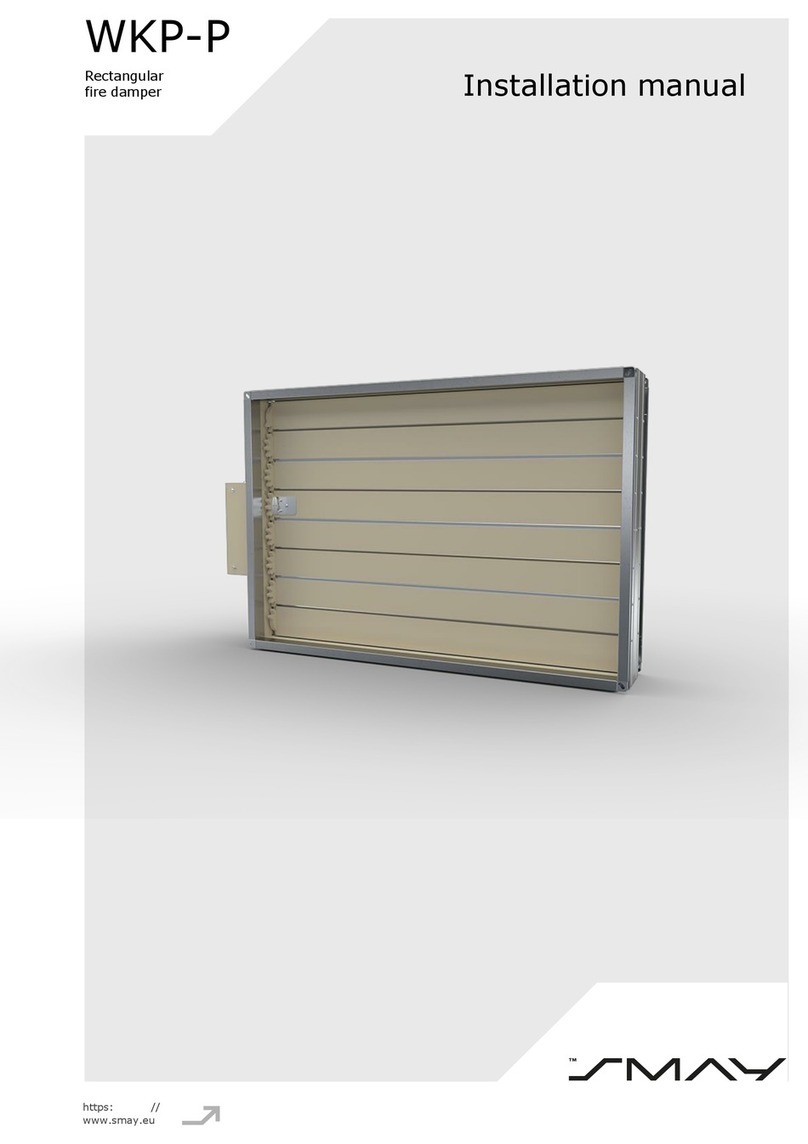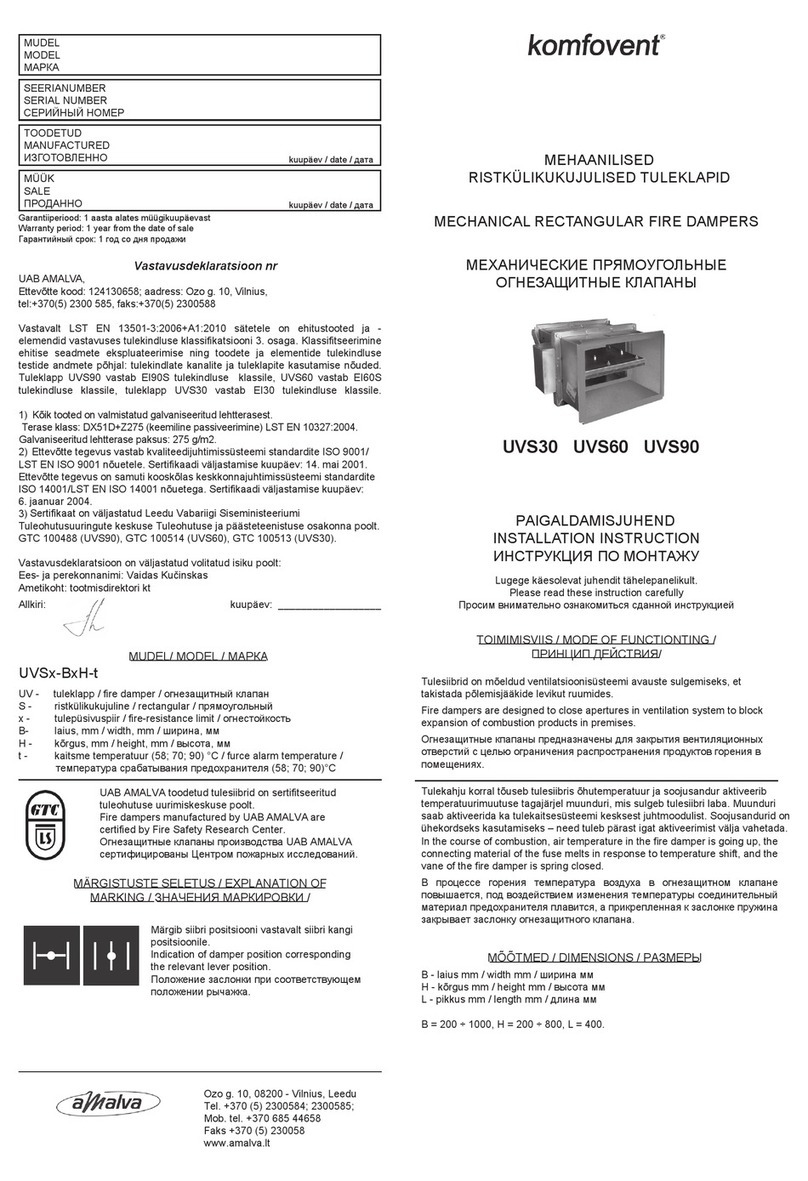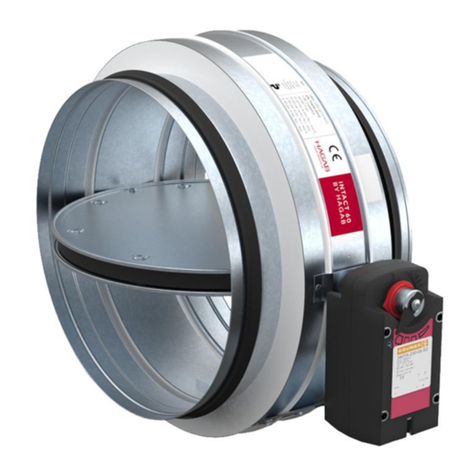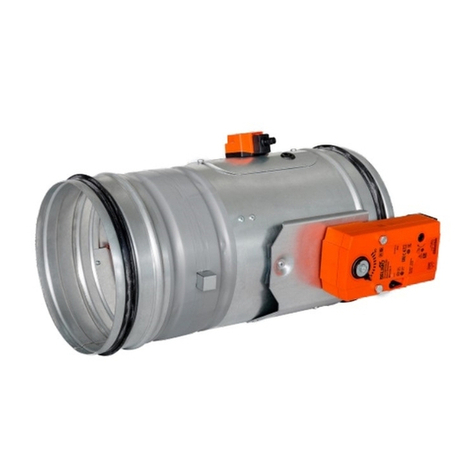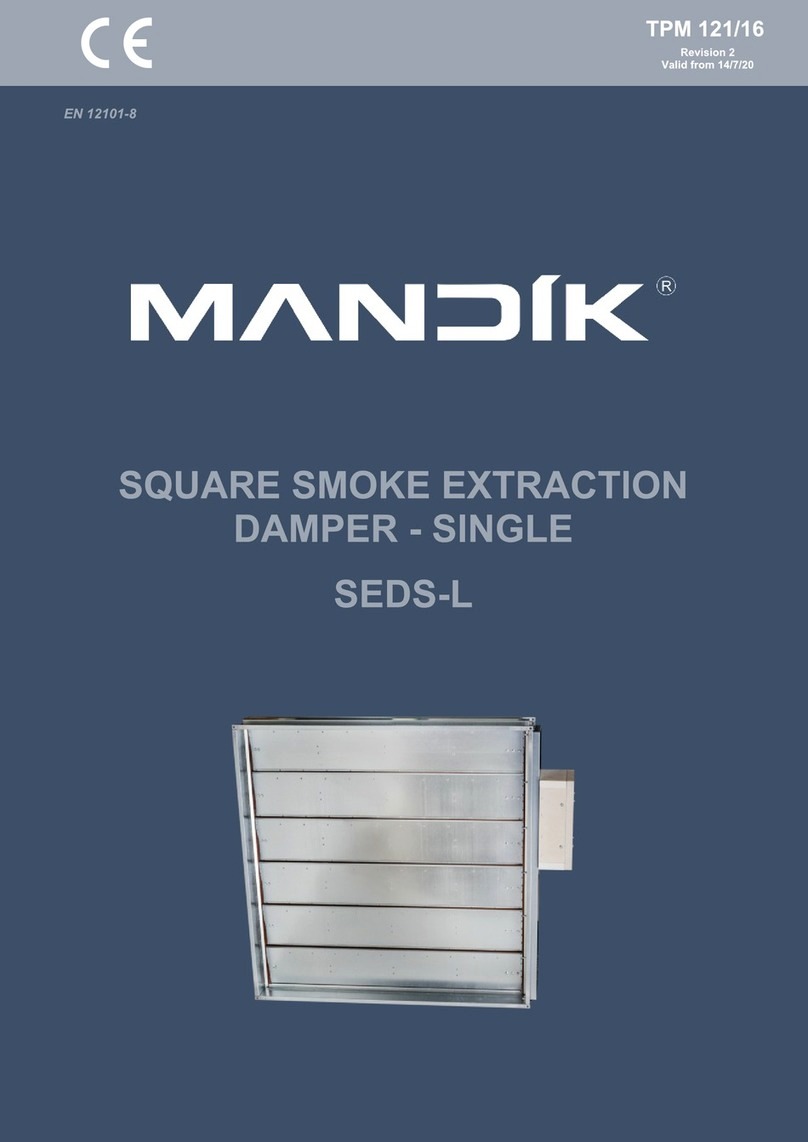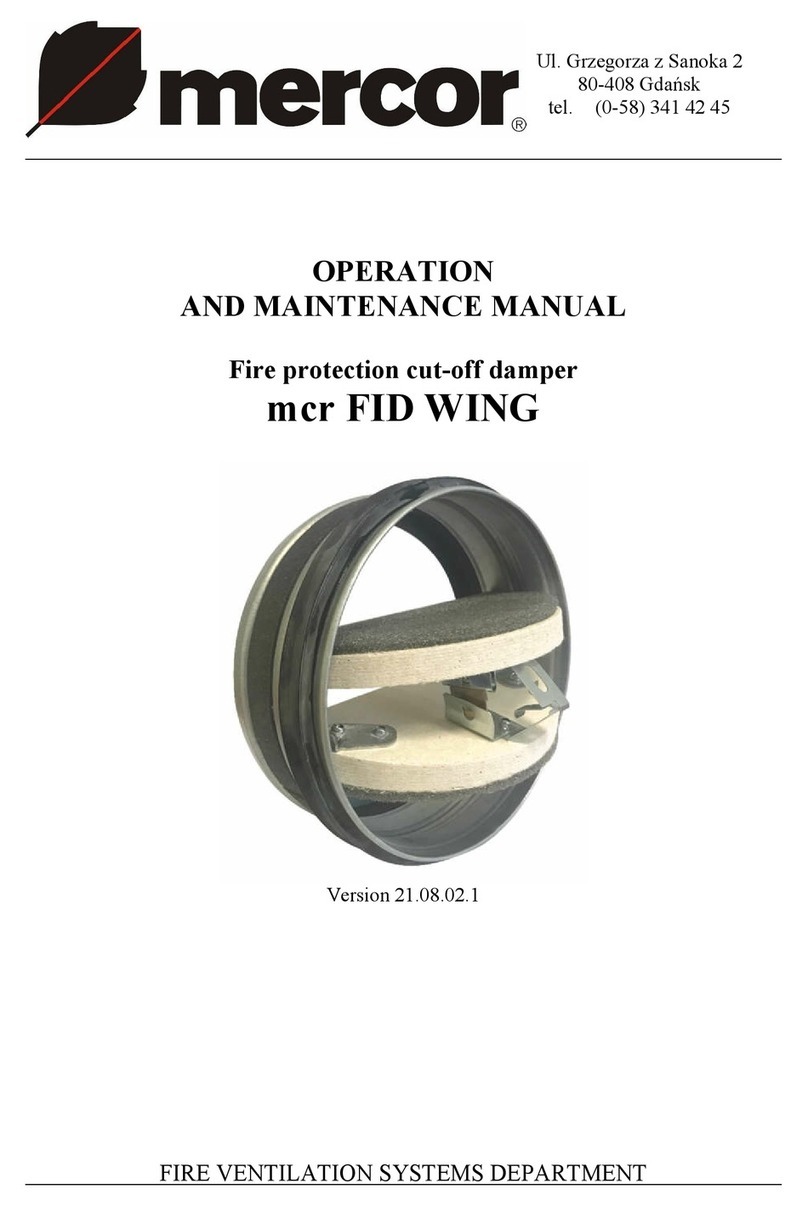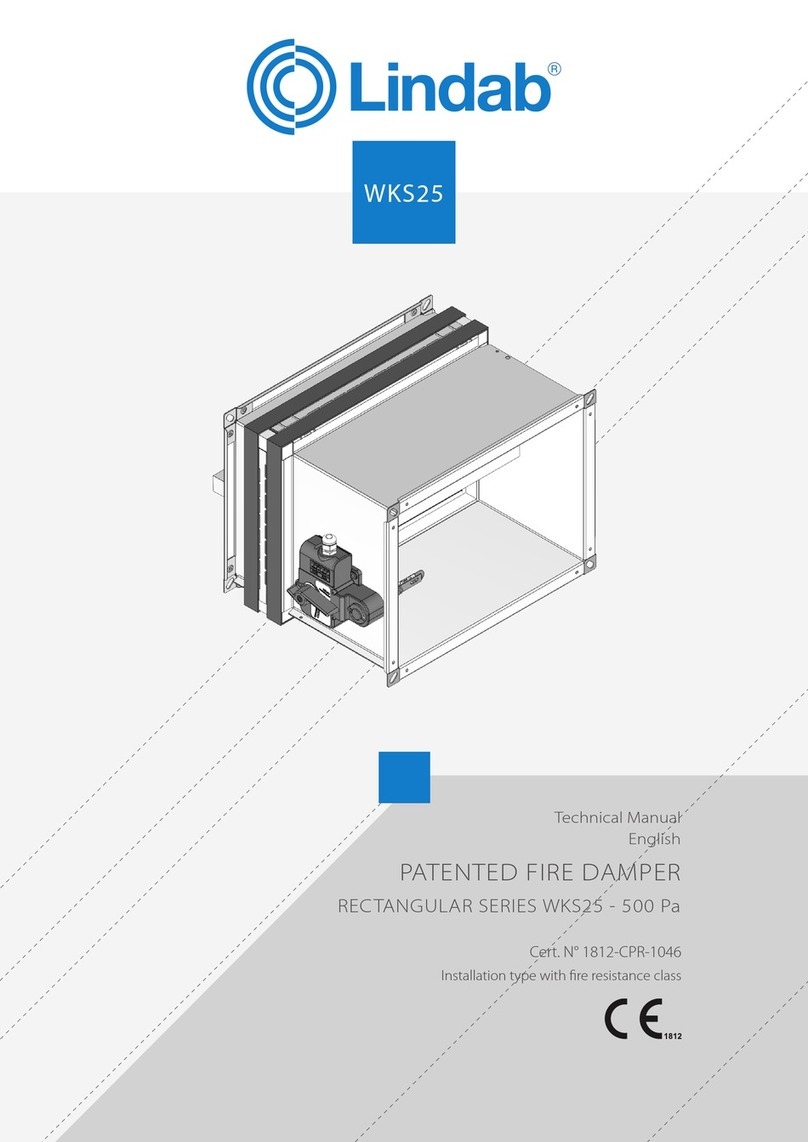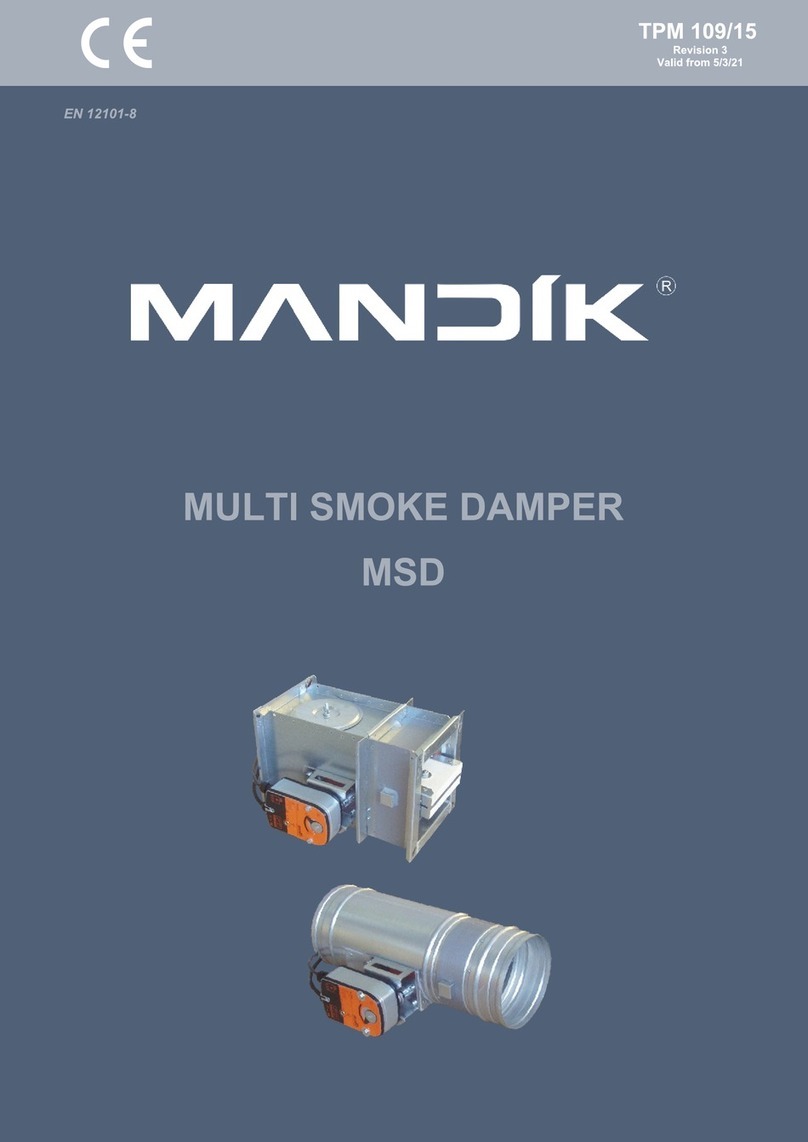
DETECTION
To protect against the spread of both fire and fire gas, the
damper must be controlled by a smoke detector mounted in
the ventilation duct near the damper or in another suitable
location and be equipped as specified below.
To protect against the spread of fire alone, the damper must
be controlled by a smoke and/or heat detector mounted in
the ventilation duct near the damper or in another suitable
location.
The heat detector must close the damper at a temperature
of no more than +72 degrees in the duct.
CONTROL
The fire gas damper must be function tested at least once
every 48 hours. The function test means that the dampers
must close and open at intervals as above.
The function test must be performed automatically and can
be controlled by e.g. a control and monitoring system.
MONITORING
At the function test interval, the damper’s closing function
is checked automatically. If any damper does not close, a
malfunction should be indicated immediately.
OPERATING AND MAINTENANCE INSTRUC-
TIONS
Periodic inspection once per year.
INTERNAL CONTROL VIA INSPECTION COVER
OR CLEANOUT DOOR IN CONNECTING DUCT
– Check by triggering the smoke detector so the
damper closes.
– Check that the damper blade closes and opens freely by
switching off power to the actuator. If the junction box
KBHA-1 is installed, press the “DAMPER TEST” button.
Keep the button pressed to interrupt the voltage to the
actuator. Alternatively, the voltage can be interrupted by
pressing the “Test” button on the damper’s thermal sensor.
– Check the fitting of the sealing strip on the damper blade.
– Check the cleaning requirements in conjunction with the
ventilation system function test.
EXTERNAL CONTROL
– Check that the damper frame has not been
subjected to mechanical damage.
– Check that the seal in the structural element has
not been damaged.
– Check the fitting of the actuator on the shaft and frame.
– Check that the actuator cabling is not damaged.
– Check that the damper is clean. If necessary, wipe with
a slightly dampened cloth.
CLEANING
– When cleaning the inside of the damper, always choose
a gentle cleaning method such as a nylon brush and/or
compressed air.
SPARE PARTS LIST
Actuator brand Gruner or Belimo, see rating plate on
the actuator.
HAGAB – INSTALLATION, OPERATION AND MAINTENANCE
Flodin Fernström | 01 2019
INTACT
Fire/Fire gas damper
Hagab Box 135, 56202 Taberg
|
Visit Industrivägen 5, 56241 Taberg
|
Phone 036-363090
|
Fax 036-363099
|
www.hagab.com
|
Sales Office Jönköping Phone 036-363090
|
Stockholm Phone 08-6899010
Drawing name:
